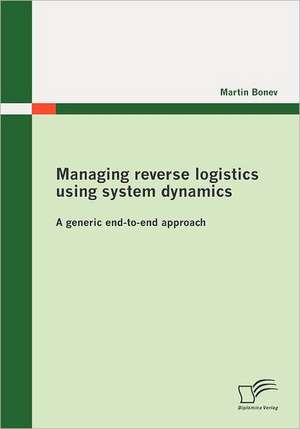Managing Reverse Logistics Using System Dynamics: A Generic End-To-End Approach
Autor Martin Boneven Limba Engleză Paperback – 29 feb 2012
Preț: 475.85 lei
Preț vechi: 587.46 lei
-19% Nou
Puncte Express: 714
Preț estimativ în valută:
91.05€ • 95.07$ • 75.36£
91.05€ • 95.07$ • 75.36£
Carte disponibilă
Livrare economică 15-29 martie
Preluare comenzi: 021 569.72.76
Specificații
ISBN-13: 9783842869905
ISBN-10: 3842869908
Pagini: 156
Dimensiuni: 178 x 254 x 8 mm
Greutate: 0.28 kg
Editura: Diplomica Verlag GmbH
ISBN-10: 3842869908
Pagini: 156
Dimensiuni: 178 x 254 x 8 mm
Greutate: 0.28 kg
Editura: Diplomica Verlag GmbH
Notă biografică
Martin Bonev is a doctoral candidate at the Technical University of Denmark. His research is focused within the area of product and process modeling, product modularization and business process development. He has studied industrial engineering at the Leibniz University of Hannover, with a specialization in production management and logistics. During his studies, the author gained further experience within his research field through various internships and through his accomplishment of external research projects. Being in particular fascinated by the Japanese culture and its peculiar research tradition, the author has spent some time at the University of Tokyo, which is famous for its long tradition and excellent research. His study of the specific research methods in Japan motivated him to combine his research focus in production management and logistics with the applied methodologies in site. As a result, the presented work is based on a collaboration project between universities in EU and Japan. The practical part of this work has been primarily carried out on site, whereas the theoretic elaboration has been completed at the corresponding institute at the Leibniz University of Hannover.













